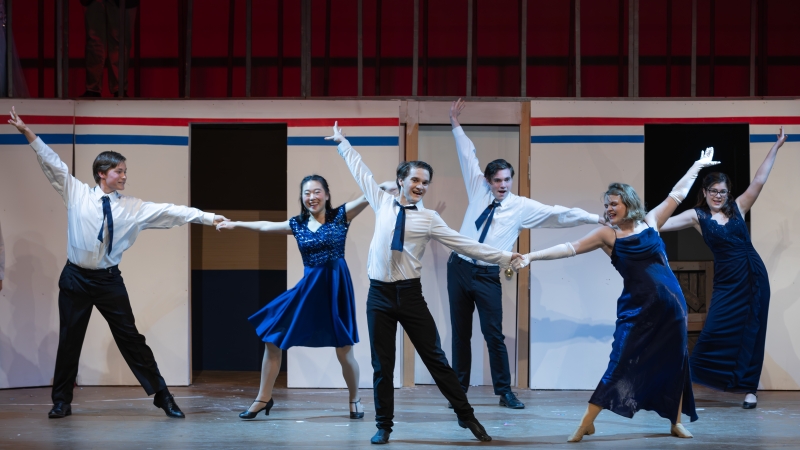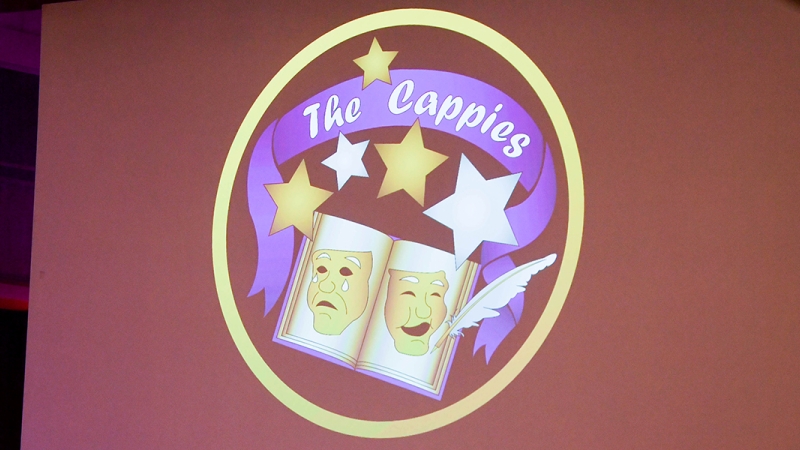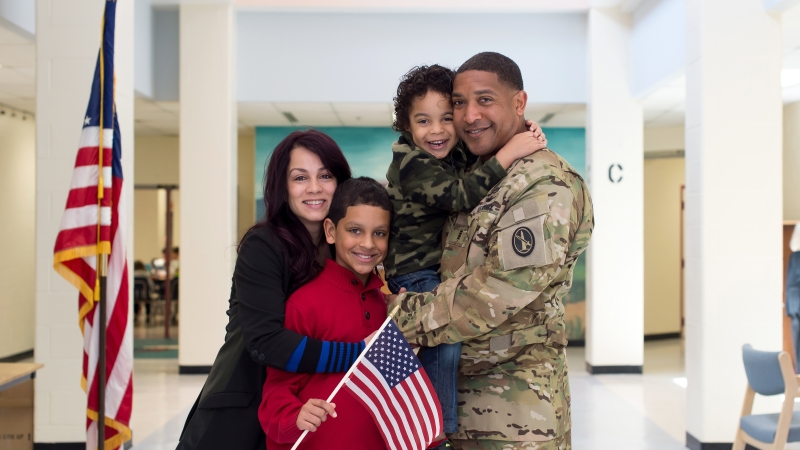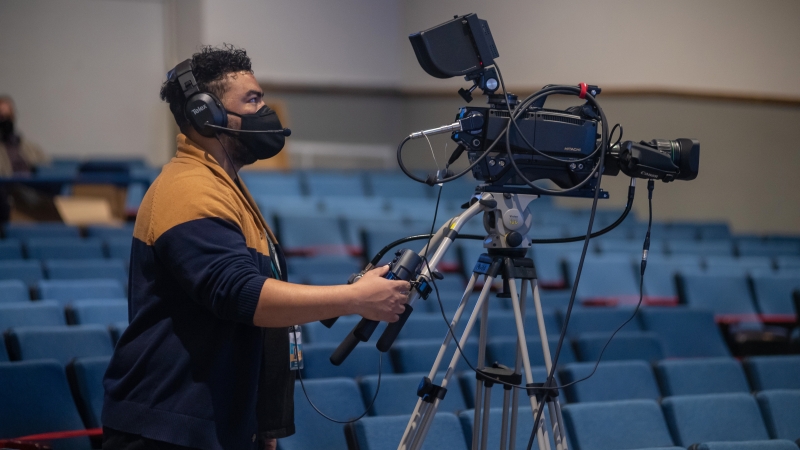
Cappies Review of Pride and Prejudice at Robinson Secondary School
Fairfax County Public Schools students are talented actors, musicians, and visual artists. Many FCPS high schools participate in the Washington, D.C., chapter of the Critics and Awards Program for High School Theatre, otherwise known as the Cappies.
The Cappies is a program through which high school theater and journalism students are trained as critics, attend shows at other schools, write reviews, and publish those reviews in local newspapers. There are fifteen Cappies chapters across the United States and Canada.
Editor's Note: This review of Pride and Prejudice was written by Addie Harris of McLean High School.
Love has different meanings and manifestations to everyone. To Lizzie Bennet, however, such feelings are hardly worth her time. In Robinson Secondary School's modernized production of Jane Austen's Pride and Prejudice, Lizzie audaciously argues against the status quo that marriage is a one-way ticket to happiness and prosperity.
Adapted by Kate Hamill from the classic novel by Jane Austen, Pride and Prejudice follows protagonist Lizzie Bennet, a stubborn middle child in Regency England in the early 1800s. Surrounded by lovesick sisters and a mother desperate for wealthy suitors for her daughters, when she encounters the proud and mysterious Darcy, it is no surprise that Lizzie takes no interest in his entitled attitude. As she observes the love and chaos unfolding around her, ridden with pop culture references and slapstick comedy, Lizzie begins to re-evaluate her prejudices towards love and marriage, including those toward the alluring Darcy.
This modernized version of Pride and Prejudice was first adapted and produced by Kate Hamill in 2017. Hamill debuted her adaptation at the Hudson Valley Shakespeare Festival in upstate New York later that year, where it was an immediate success, moving on to Primary Stages in New York City.
The loving theme of this show could not have been possible without the emotional range portrayed by each of the lead actors. In her arguments with Darcy, actress Ella Brown excelled in her use of volume and emotion to convey Lizzie's composed yet passionate character. For the character of Darcy, actor Lukas Simcox's solemn facial expression throughout the show, as well as his stoic composure, emphasized his similar opposition to love. Together, Brown and Simcox succeeded in portraying two characters who have no idea they're made for each other.
The "comedy" aspect of this romantic comedy was enforced by the colorful and engaging supporting cast, whose appearances on stage left audience members rolling with laughter. Bennet sisters Mary (Kira Gilligan), Jane (Erin Oedemann), and Lydia (Bella Ragona) lit up the stage with their lively banter and striking facial expressions. Dashing suitors like Mr. Bingley (Benjamin Fredericks), Wickham (Jackson Foerster), and Mr. Collins (Shawn Hubbard) left audience members cringing in the best way, while Mr. and Mrs. Bennet, played by Jake Wilson and Anna Woods respectively, epitomized the "old married couple" trope with their animated arguments and touching moments of union.
The technical elements of this show demonstrated attentiveness to detail, reflecting a thorough understanding of the show's themes. Lighting (Katie Eagan, Parker Matt, Zaya Economides) and Sound (Aly Wamboldt, Joey Freeman) worked seamlessly together to execute big scenes, such as the dance break in Act One to Whitney Houston's "I wanna dance with somebody." Costumes (Lora-Berkely Macaranas, Xia Klosk, Cameron Schermer, Riley Baker) demonstrated creative attention to detail, as they reused old materials to create distinct, period-appropriate ensembles for every person on stage. Hair and makeup, led by Agustin Anello, Gabrielle Smith-Stutzer, and Jamie McCormick successfully created looks for each character which combined elements of pop culture with distinctive traits of each character. Choreography (Jasmine Patrick) stood out with its simple yet effective approaches to developing the story, with the subtle, coordinated ballroom dances happening in the background of each conversation between characters.
Through a combination of meaningful dialogue, emotion, and detailed tech, Robinson Secondary School transported audience members to a world where a suitor with 5,000 pounds a year seems an appropriate solution to any problem. By the end of the show, however, viewers were left with butterflies in their stomachs as Robinson's production of Pride and Prejudice redefined what it means to really love someone.







